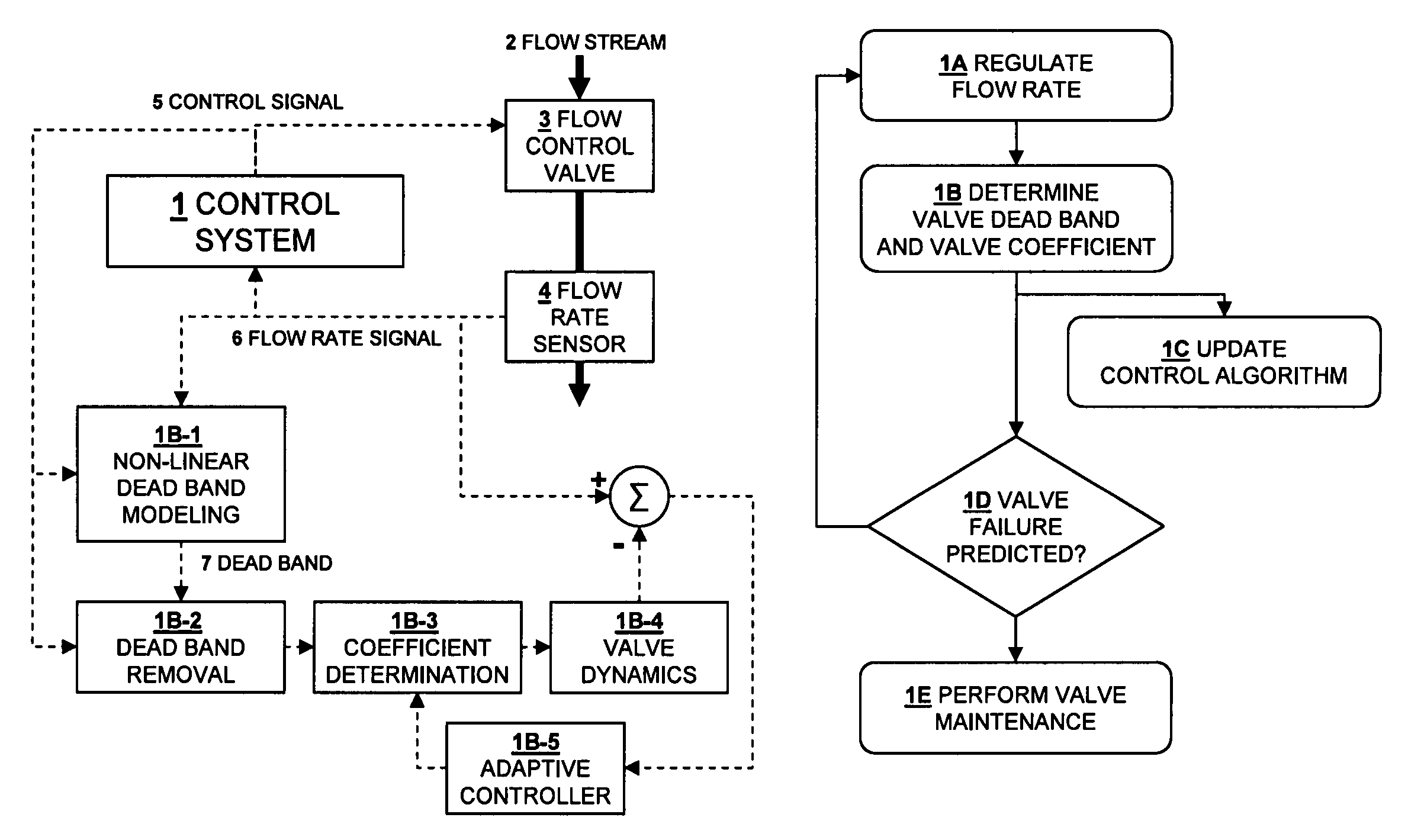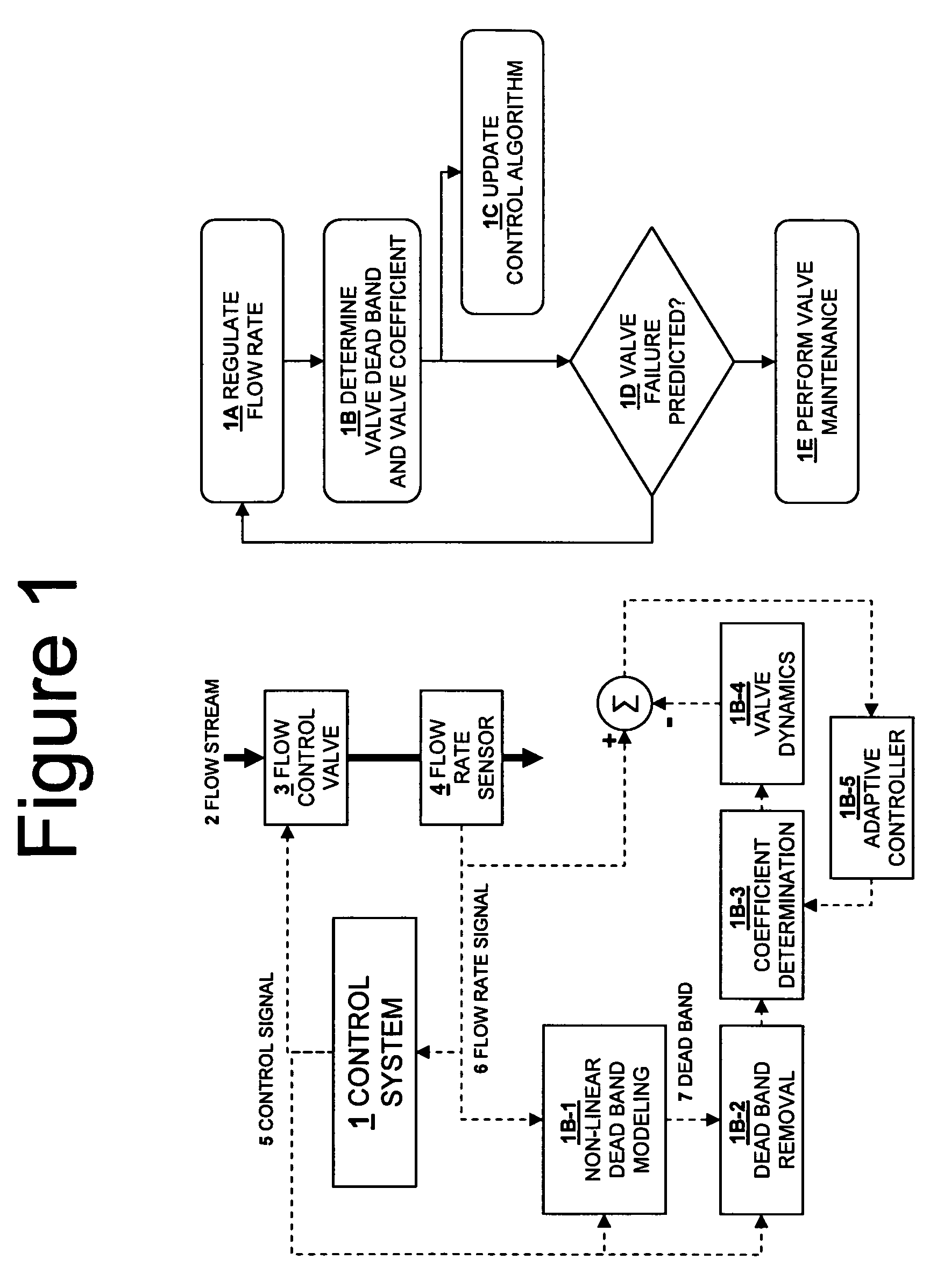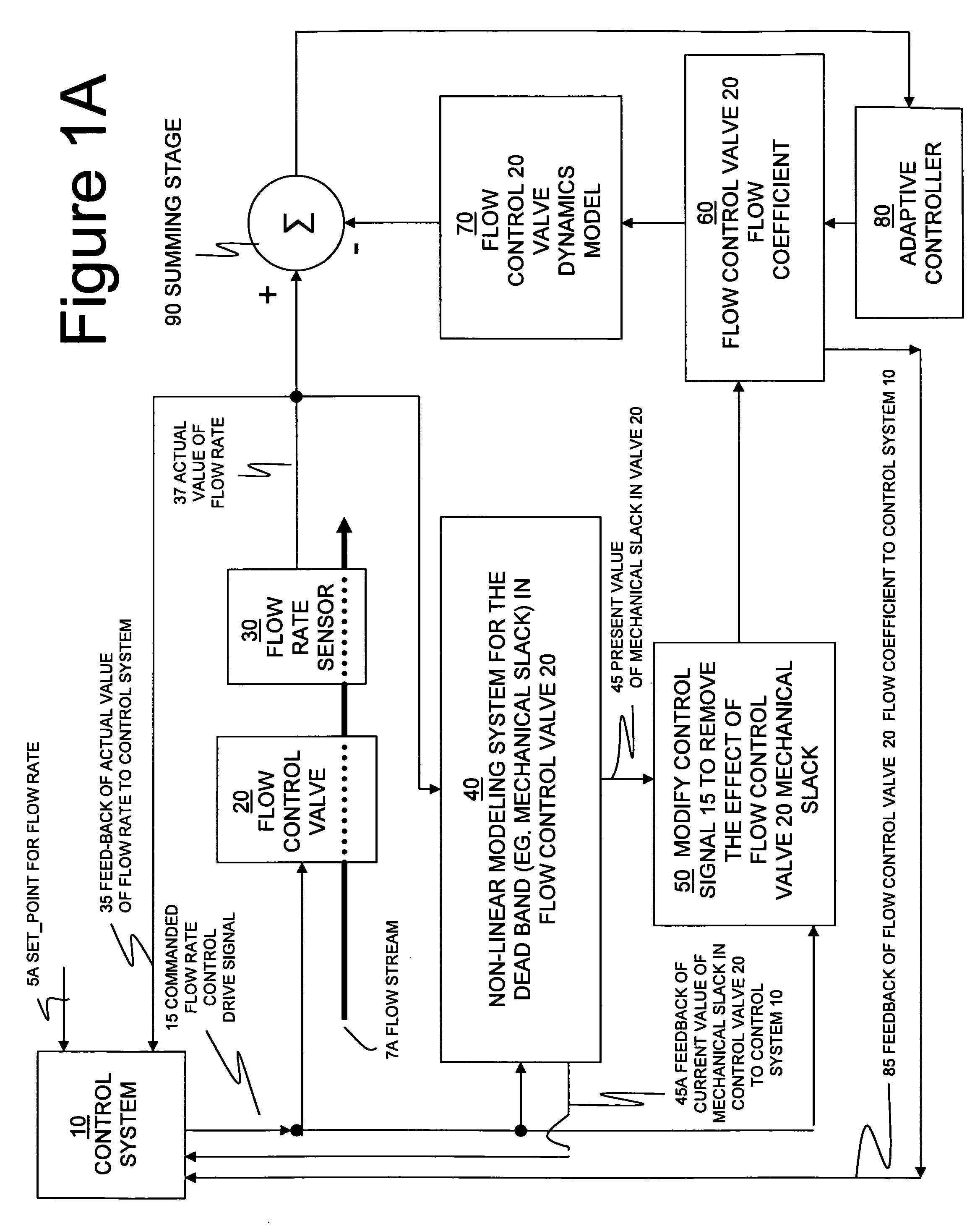Methods for managing flow control valves in process systems
a technology of flow control valves and process systems, applied in the direction of ratio control, testing/monitoring control systems, instruments, etc., can solve the problems of affecting the process variable, the edge of the gate can be worn-away by abrasives, and the particular process variable is not easily measured, so as to achieve the effect of reducing the amount of signal definition, reducing the accuracy of overall process control, and reducing the efficiency of overall process control
- Summary
- Abstract
- Description
- Claims
- Application Information
AI Technical Summary
Benefits of technology
Problems solved by technology
Method used
Image
Examples
example 1
[0052]At a hydrocarbon production site, a process fluid flow stream was passed through a rotary-actuated control valve and a flow meter for a period of about 4300 seconds at flow rates varying between 150 and 300 gallons per minute. FIG. 8 shows the recorded (e.g. “measured”) data for the actual flow rate as measured by the actual flow meter, represented in FIG. 1A as flow rate sensor 30, and as regulated by the actual rotary control valve (flow control valve 20), which was being signaled by an automatic controller (within control system 10). FIG. 8 also shows a simulated (e.g. “estimated”) flow rate using the systems and methods of the present innovations. Note that the drive signal (signal 15) data to the rotary control valve was also recorded, but is not displayed in FIG. 8.
[0053]Using the method of FIG. 1A, both measured flow rate (signal 37) data and the drive signal data were processed at a later time off-line in a control algorithm simulation program, “MATLAB”, from The MathW...
PUM
 Login to View More
Login to View More Abstract
Description
Claims
Application Information
 Login to View More
Login to View More - R&D
- Intellectual Property
- Life Sciences
- Materials
- Tech Scout
- Unparalleled Data Quality
- Higher Quality Content
- 60% Fewer Hallucinations
Browse by: Latest US Patents, China's latest patents, Technical Efficacy Thesaurus, Application Domain, Technology Topic, Popular Technical Reports.
© 2025 PatSnap. All rights reserved.Legal|Privacy policy|Modern Slavery Act Transparency Statement|Sitemap|About US| Contact US: help@patsnap.com



